ABA Therapy for Self-Injurious Behaviors
Understanding and Managing Self-Injurious Behaviors in Autism
Addressing Self-Injurious Behaviors in Autism Spectrum Disorder
Self-injurious behaviors (SIB) are prevalent among individuals with autism spectrum disorder (ASD), posing significant health risks and challenges for families and caregivers. These behaviors, such as head banging, biting, or scratching, often serve as a means of communication or coping, especially in those with limited expressive abilities. Effectively managing SIB requires a nuanced understanding of their causes, functions, and the implementation of well-founded behavioral interventions like ABA therapy, complemented by medical and psychological support when necessary.
The Role of Functional Behavioral Assessments in Understanding SIB
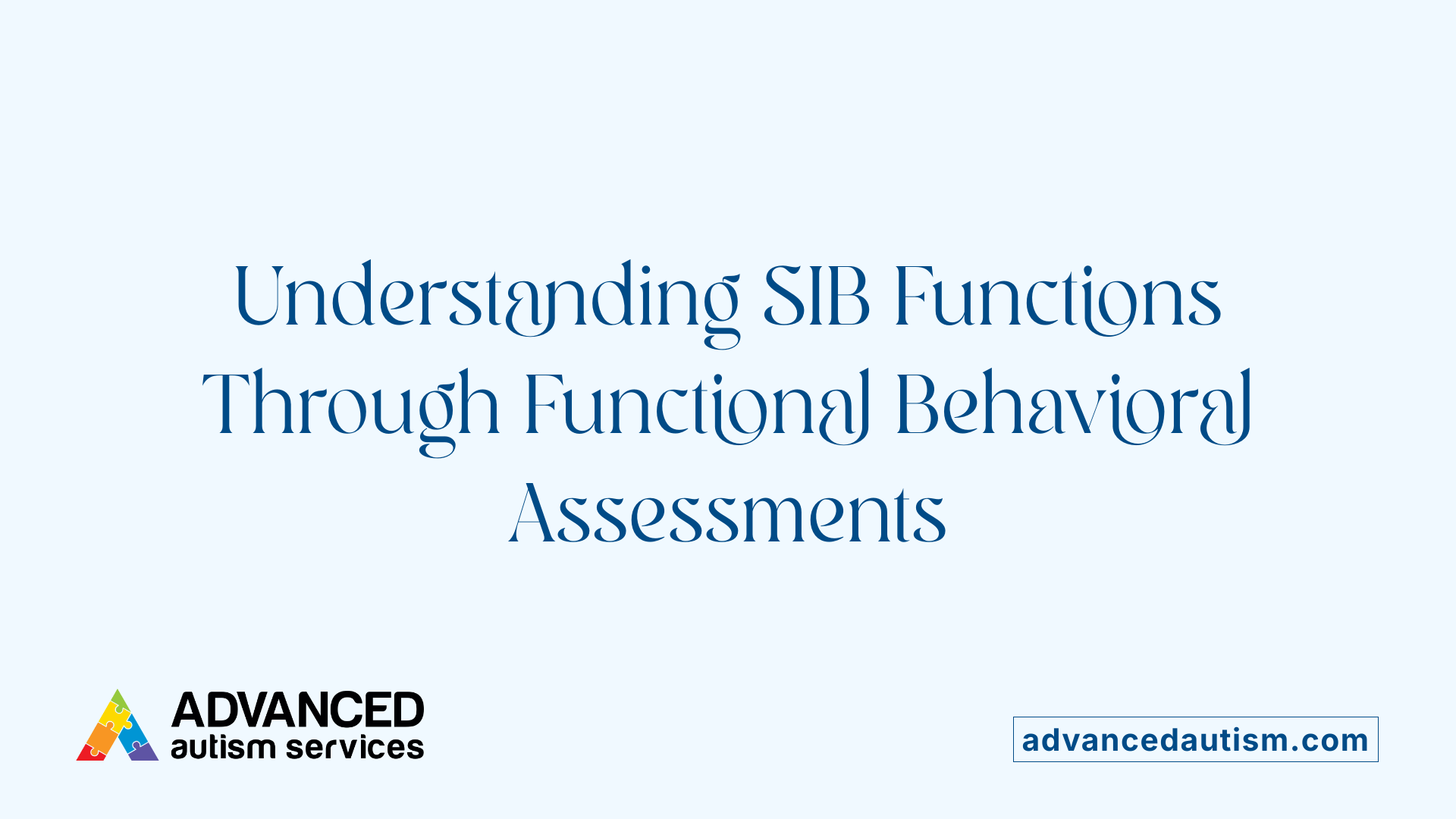
What are the functions of self-injurious behaviors?
Self-injurious behaviors (SIB) serve several functions for individuals with autism and other neurodevelopmental disorders. Primarily, these behaviors can act as a form of sensory regulation, providing internal stimulation or relief from discomfort. They may also serve as a way to escape or avoid undesired stimuli, tasks, or environments, offering temporary relief from stress or demands.
Additionally, SIB can function as a method to seek social attention or access tangibles, such as preferred objects or activities. Sometimes, behaviors like head-banging or biting are used to communicate needs or feelings when verbal skills are limited. Understanding these functions helps in devising targeted interventions.
How are assessments for SIB conducted?
Assessment of self-injurious behaviors typically begins with a functional behavioral assessment (FBA). An experienced behavior analyst or therapist observes the individual across different settings, noting the behavior's frequency, duration, and context.
The assessment involves recording antecedents (events before the behavior), the behavior itself, and consequences (reactions after the behavior). This data collection helps identify patterns and triggers.
Other methods include interviews with caregivers and teachers, along with standardized questionnaires to gather comprehensive insights.
How can triggers and functions be identified?
Identifying triggers involves analyzing the data from FBA to detect common antecedents and consequences associated with SIB. For example, if head-banging frequently occurs after a demanding task, it may serve as an escape function.
Similarly, if self-injury happens following sensory stimulation or in response to environmental changes, sensory or emotional regulation functions might be involved.
Recognizing these triggers allows clinicians to tailor interventions directly targeting the underlying causes, ultimately reducing the occurrence of harmful behaviors and promoting healthier communication and coping strategies.
| Assessment Method | What It Evaluates | Importance | Additional Details |
|---|---|---|---|
| Direct Observation | Behavior patterns in real-time | Helps identify triggers and functions | Conducted by trained professionals across settings |
| Caregiver Interviews | Contextual insights | Provides perspectives on triggers | Utilizes structured questionnaires |
| Standardized Questionnaires | Behavioral patterns and functions | Supplements observational data | Examples include the Functional Assessment Interview |
| Data Analysis | Frequency, duration, triggers | Guides intervention planning | Analyzes antecedents and consequences |
Understanding the functions of self-injurious behaviors through comprehensive assessment is essential for designing effective, individualized treatment plans. Targeted interventions based on these insights tend to be more successful in reducing harmful behaviors and improving quality of life.
Behavioral Interventions and Techniques within ABA Therapy
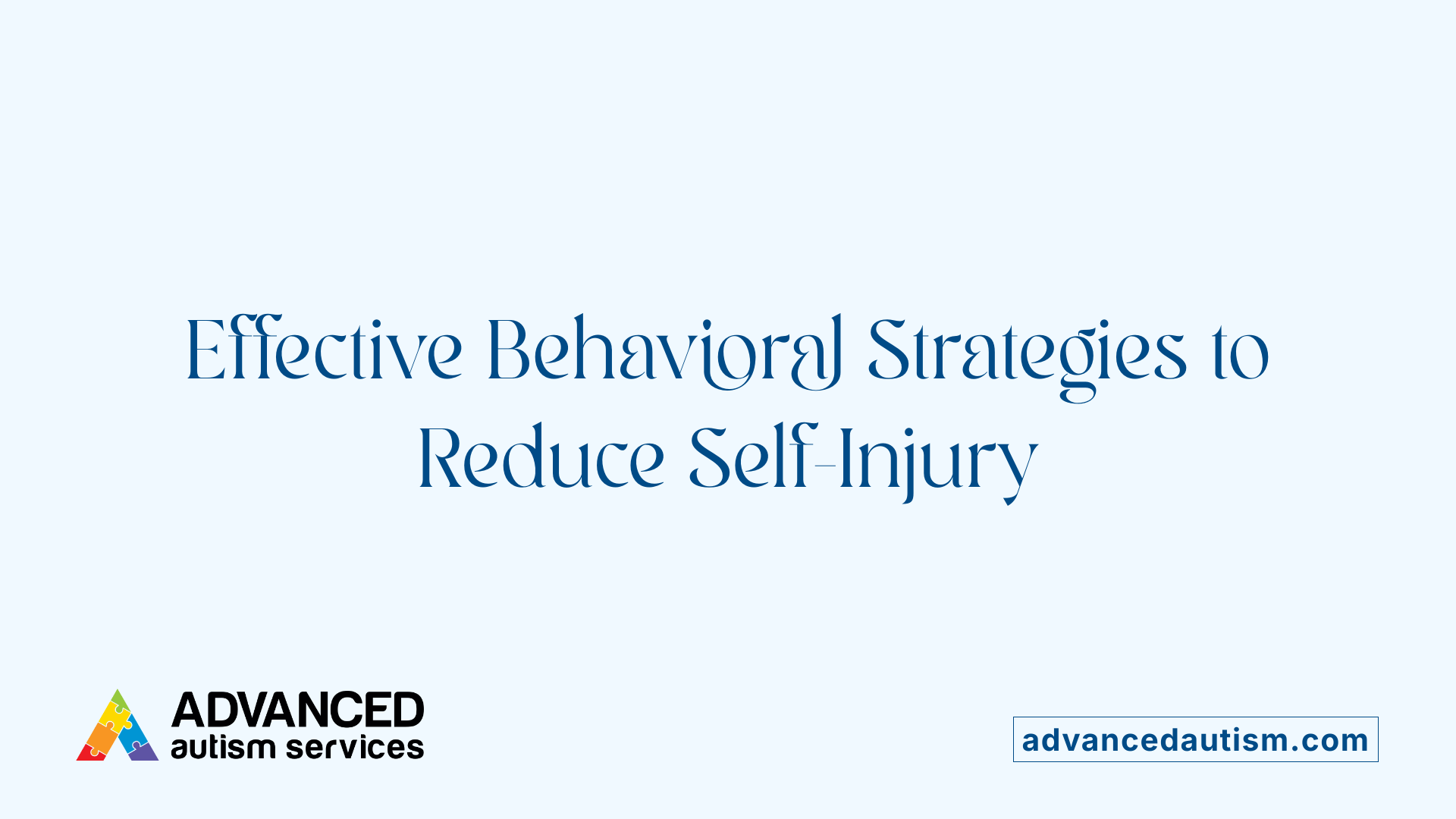
What are effective behavioral interventions for self-injurious behaviors in individuals with autism spectrum disorder?
A variety of evidence-based behavioral strategies are employed to address self-injurious behaviors (SIBs) in individuals with autism spectrum disorder (ASD). These interventions often begin with a thorough functional behavioral assessment (FBA) to understand the triggers and functions of the behavior, such as seeking attention, escaping demands, sensory stimulation, or access to tangible items. Based on this understanding, tailored treatment plans include approaches like positive reinforcement, extinction, replacement behaviors, and modifying antecedents.
Applied Behavior Analysis (ABA) offers structured techniques aimed at decreasing harmful behaviors and increasing adaptive, functional skills. For example, reinforcement strategies strengthen desirable behaviors, while extinction procedures reduce SIBs by withholding reinforcement for the harmful behavior. Teaching alternative communication methods—such as sign language, PECS (Picture Exchange Communication System), or AAC (Augmentative and Alternative Communication) devices—enables individuals to express needs without resorting to self-injury.
How can self-injurious behavior be reduced or prevented?
Reducing or preventing self-injurious behaviors involves addressing their underlying causes. Medical evaluations are essential to rule out health issues like pain or discomfort that might trigger SIBs. Addressing communication deficits through speech therapy and social stories helps express needs effectively.
Behavioral techniques include antecedent modifications, such as adjusting environments to avoid known triggers, and teaching new, functional skills to replace SIBs. Reinforcing positive alternative behaviors, providing sensory-motor tools for self-regulation, and ensuring consistent intervention across settings are crucial. In some cases, medication—like risperidone or aripiprazole—may be used to manage severe behaviors when behavioral strategies alone are insufficient.
What techniques can be used to redirect self-injurious behaviors?
Redirecting SIBs involves employing replacement behaviors that serve the same function but are safer and more appropriate. For sensory-related SIBs, providing sensory alternatives like deep pressure or tactile toys can help fulfill sensory needs.
For escape-maintained behaviors, teaching individuals to request breaks or assistance through functional communication strategies is effective. Attention-seeking behaviors can be reduced by teaching requests for social interactions or using neutral responses to minimize reinforcement. Tangible-seeking behaviors are addressed by teaching individuals to request desired items appropriately.
Across these approaches, consistent reinforcement of suitable behaviors, prompt response to SIBs, and gradual fading of prompts are essential. Collaboration with trained behavior analysts guarantees that interventions are ethical, effective, and individualized, ultimately leading to meaningful improvements in managing self-injurious behaviors.
Addressing Underlying Medical and Psychological Factors
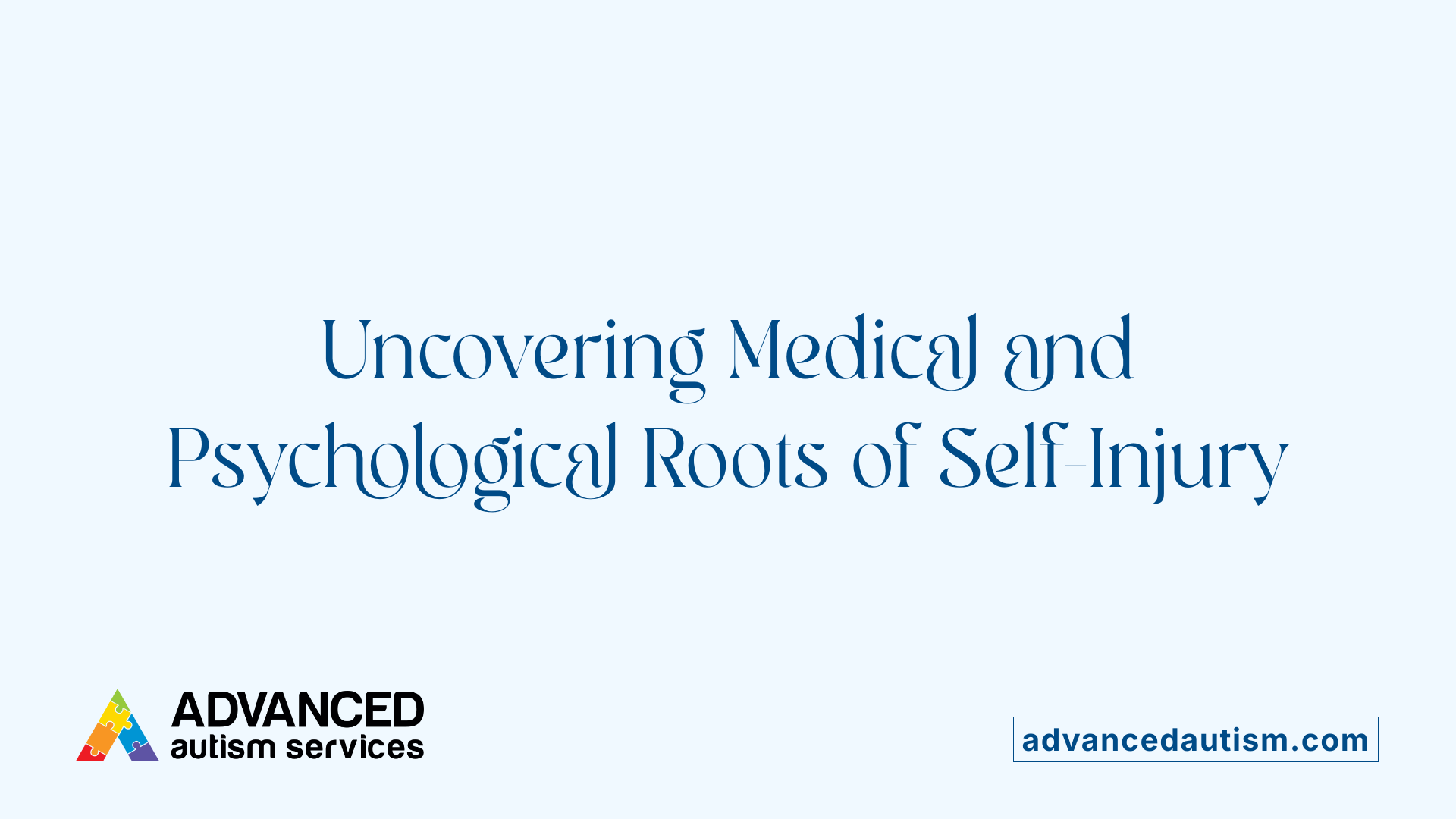
What are effective behavioral interventions for self-injurious behaviors in individuals with autism spectrum disorder?
Behavioral interventions, especially functional behavioral assessment (FBA), are foundational in managing self-injurious behaviors (SIB). These assessments help identify the specific functions of the behavior—whether it’s for attention, escape, seeking sensory input, or tangibles. Based on this, individualized treatment plans are devised, employing techniques like positive reinforcement for alternative behaviors, differential reinforcement, and extinction. Teaching communication skills through methods such as PECS or sign language often reduces reliance on SIB. Additionally, concerns like pain or discomfort should be addressed, and if necessary, therapies like ABA target replacing harmful behaviors with functional ones.
How can self-injurious behavior be reduced or prevented?
Proactive prevention involves a comprehensive approach. Ruling out medical causes such as infections or injuries is vital, as physical pain can trigger SIB. Understanding the behavior's purpose allows for targeted interventions. For example, increasing routine, offering sensory alternatives, and improving communication tools help prevent triggers. Behavior modification strategies, including antecedent manipulations and reinforcing positive, appropriate responses, are effective. Regular monitoring and data collection ensure adjustments can be made promptly, optimizing outcomes.
What techniques can be used to redirect self-injurious behaviors?
Redirecting self-injurious behaviors hinges on understanding their function. For attention-seeking SIB, teaching the individual to request attention appropriately can be effective. For escape-related behaviors, providing alternative ways to seek breaks or help reduces harmful actions. Sensory-based SIBs can be managed by introducing calming or deep-pressure gadgets. Reinforcing alternative behaviors and increasing access to preferred activities can decrease SIB over time. For medical causes, appropriate treatment is essential for behavioral improvement. Generally, techniques focus on replacement behaviors, positive reinforcement, and environmental modifications.
Additional Insights
Understanding the root causes of SIB—whether medical, sensory, or communicative—is crucial for effective intervention. Working closely with behavior specialists, speech therapists, and medical professionals enhances the success of individualized plans. When necessary, pharmacotherapy options like risperidone or aripiprazole may be considered, especially when combined with behavioral strategies. Ensuring safety through professional guidance and family involvement helps sustain progress and improves overall well-being.
The Role of Pharmacotherapy in Managing SIB
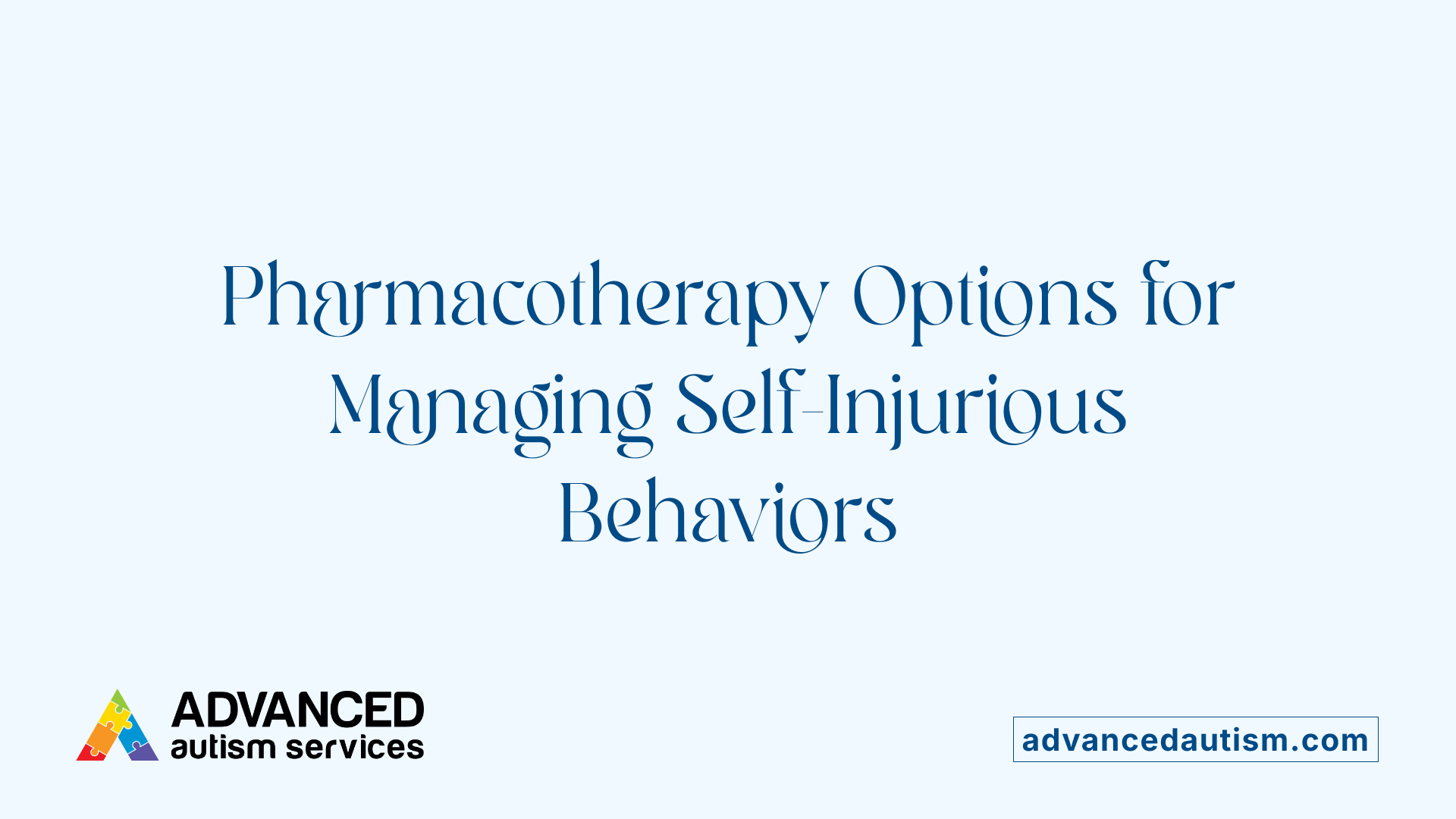
What are effective behavioral interventions for self-injurious behaviors in individuals with autism spectrum disorder?
Behavioral interventions like functional behavioral assessment (FBA) are considered first-line treatments for self-injurious behaviors (SIBs). These involve identifying the specific triggers and functions of the behavior—such as gaining attention, escaping demands, or sensory stimulation—and then developing strategies like positive reinforcement, communication training, and environmental modifications to reduce harmful behaviors.
How can self-injurious behavior be reduced or prevented?
Preventing SIB begins with understanding its causes through thorough assessments. Addressing physical health issues, teaching alternative communication methods, and modifying environmental triggers can significantly lower the incidence of SIBs. Behavioral therapies like ABA focus on replacing harmful actions with positive and functional responses, while ensuring the individual's medical and emotional needs are met.
What are the evidence-based treatment approaches for self-harm in individuals with autism?
Evidence-based approaches include applied behavior analysis (ABA), which uses techniques such as differential reinforcement and extinction. Medications like risperidone and aripiprazole have shown effectiveness in managing irritability and reducing SIB, especially when behavioral methods alone are insufficient. Combining behavioral strategies with appropriate pharmacotherapy, under medical supervision, offers a comprehensive approach tailored to each individual's needs.
Controversies and Ethical Considerations in ABA Therapy
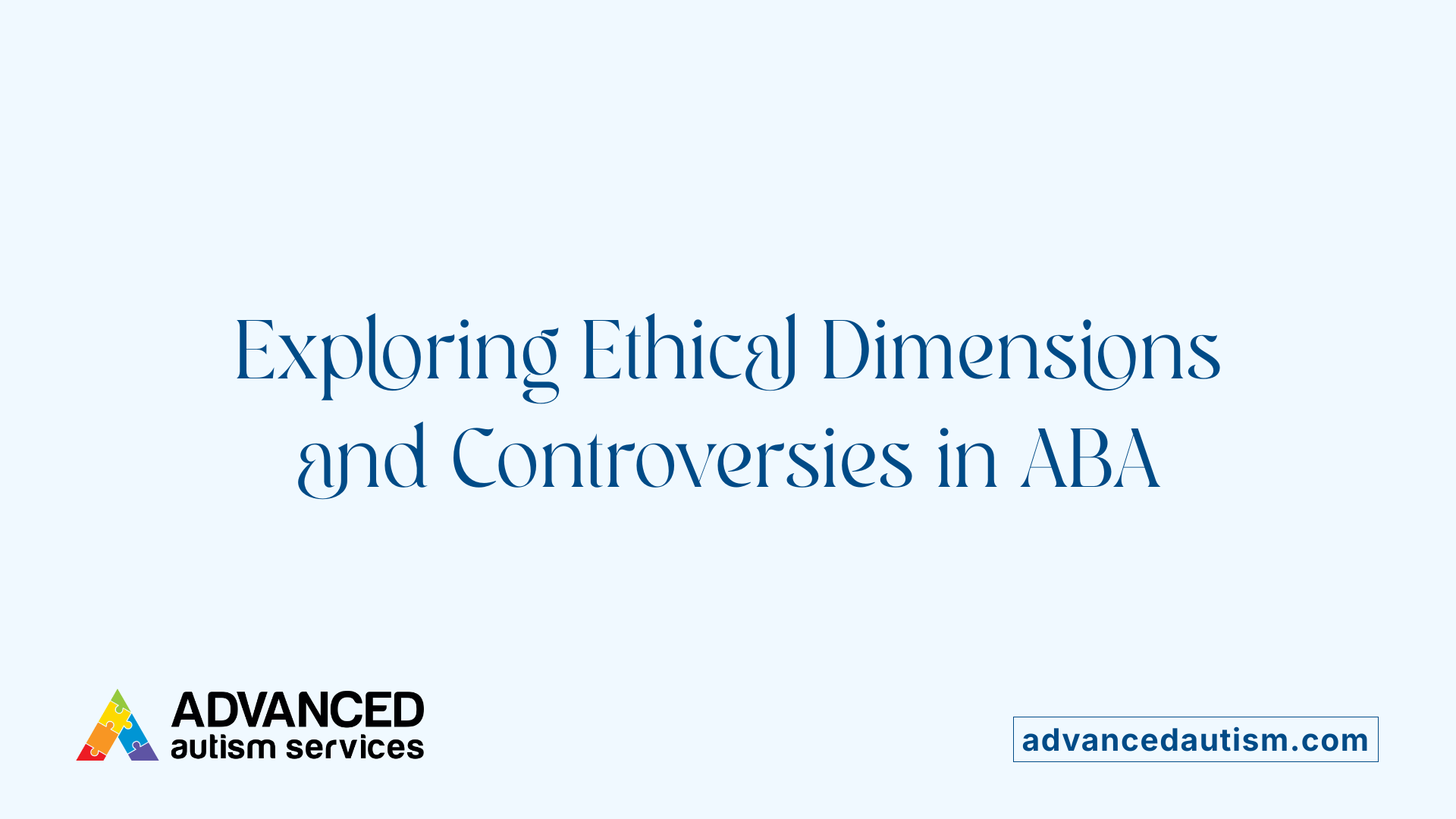
What are effective behavioral interventions for self-injurious behaviors in individuals with autism spectrum disorder?
Behavioral interventions, particularly functional behavioral assessment (FBA), are fundamental in identifying the triggers and functions of self-injurious behavior (SIB). Once the causes are understood, tailored strategies such as reinforcement of alternative behaviors, differential reinforcement, and extinction procedures are employed. Functional Communication Training (FCT) is a widely used approach that teaches individuals appropriate ways to communicate their needs, reducing reliance on harmful behaviors.
In addition, ABA therapy focuses on replacing self-injury with positive behaviors, incorporating reinforcement of desirable actions, and reducing triggers through environmental modifications. Collaborating with behavior analysts, speech therapists, and occupational therapists ensures interventions are individualized and effective.
How can self-injurious behavior be reduced or prevented?
Reducing or preventing SIB involves a comprehensive approach that addresses underlying causes. Medical evaluations help rule out or treat medical issues like pain or discomfort. Improving communication skills through methods like sign language or PECS can lessen frustration-driven behaviors.
Environmental adjustments, such as increasing routine predictability and providing sensory alternatives like weighted blankets or tactile toys, help meet sensory needs safely. Behavioral strategies include increasing positive attention, teaching coping skills, and using safe, proactive safety measures under professional guidance.
Consistent application of these strategies by trained professionals and families together is vital. Monitoring progress and adapting interventions as needed ensure long-term success in managing SIB.
What are the evidence-based treatment approaches for self-harm in individuals with autism?
Evidence-based treatments mainly involve behavior therapies, with Functional Behavioral Assessment (FBA) serving as the initial step to understand the specific function of SIB for each individual. ABA therapy is considered the primary approach, aiming to reduce harmful behaviors through positive reinforcement, replacement strategies, and environmental modifications.
In cases where behavioral interventions alone are insufficient, pharmacotherapy may be introduced. Medications such as risperidone and aripiprazole—second-generation antipsychotics—have demonstrated efficacy, especially for managing irritability and aggression associated with autism. These medications have FDA approval based on rigorous trials.
Furthermore, newer therapies like Dialectical Behavior Therapy for adolescents (DBT-A) and cognitive-behavioral approaches are explored for their potential to address underlying emotional regulation issues related to self-injury. However, ongoing research and critical evaluation of these methods are essential, as there is controversy surrounding some practices, particularly regarding ethical considerations.
Ethical debates and controversies
While ABA remains prevalent, it faces significant ethical scrutiny. Critics argue that traditional ABA can be dehumanizing, overly focused on compliance, and potentially trauma-inducing. These debates emphasize the importance of trauma-informed, person-centered approaches that prioritize consent, dignity, and the individual’s preferences.
Many advocate for understanding the reasons behind self-injurious behaviors rather than solely attempting suppression. Approaches that incorporate sensory needs, communication goals, and environmental adaptations align better with ethical standards and promote well-being.
In response to criticisms, some practitioners are shifting towards trauma-informed care, emphasizing collaboration, flexibility, and respect for individual experiences. Overall, ongoing debates highlight the need for transparent, ethical practices that support the dignity and rights of individuals with autism.
The Future of SIB Treatment and Research Directions
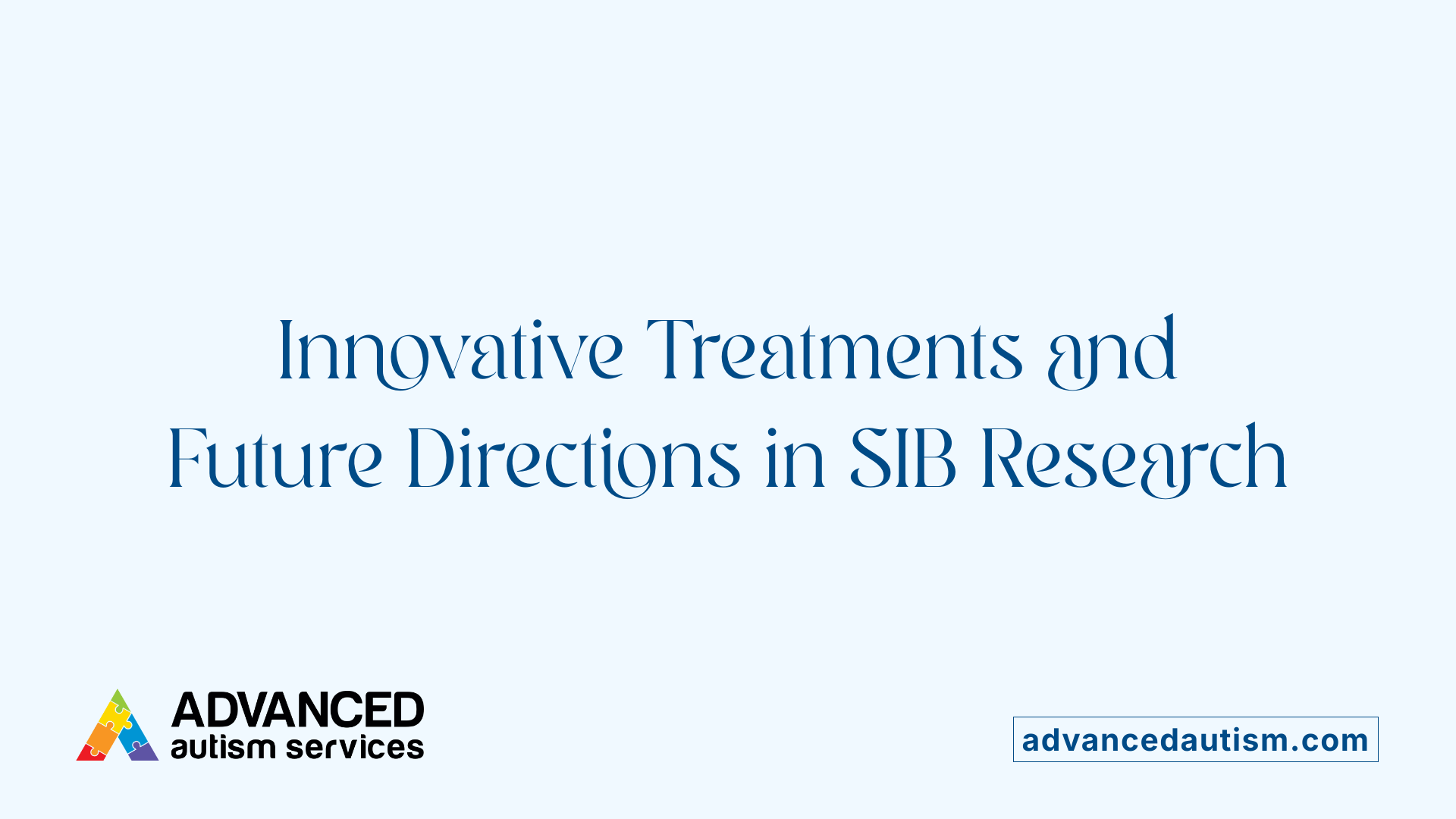
What are effective behavioral interventions for self-injurious behaviors in individuals with autism spectrum disorder?
Behavioral interventions are often considered the first line of treatment for self-injurious behaviors (SIBs) in autism. These include functional behavior assessment (FBA) to identify the triggers and functions of SIB—such as seeking attention, escape, sensory stimulation, or tangible access—and then developing individualized strategies to address these motives. Techniques like functional communication training (FCT) teach alternative ways to express needs, while reinforcement strategies encourage positive behaviors.
Other methods involve antecedent manipulations, differential reinforcement, extinction procedures, and environmental modifications to reduce triggers. For example, reinforcing communication skills or sensory alternatives can diminish reliance on harmful behaviors. Family involvement and professional support from behavior analysts are vital to ensure consistent application of these strategies.
How can self-injurious behavior be reduced or prevented?
Reducing and preventing SIB involves a comprehensive approach focused on understanding and addressing its root causes. Medical evaluations help rule out medical issues such as pain or infections that may fuel SIB. Addressing communication deficits through sign language, PECS, or AAC devices allows individuals to express their needs more effectively, decreasing frustration.
Behavioral strategies include teaching skills that replace harmful behaviors and modifying environmental triggers. It’s also crucial to reinforce positive, functional behaviors through reward systems. For severe cases, safety measures like restraints or supervised in-patient care might be necessary, but these are used cautiously and alongside other interventions. Consistent monitoring and adjusting treatments based on progress are essential for effective prevention.
What are the evidence-based treatment approaches for self-harm in individuals with autism?
Research supports several evidence-based approaches, notably Applied Behavior Analysis (ABA), which employs data-driven techniques like reinforcement, extinction, and replacement behaviors. ABA's goal is to reduce harm and increase functional, socially appropriate behaviors. Functional behavioral assessment (FBA) guides the customization of intervention plans.
In addition, increasingly recognized therapies such as Dialectical Behavior Therapy for adolescents (DBT-A) address emotional regulation and self-harm, especially when mental health issues are involved. Other approaches include Cognitive Behavioral Therapy (CBT) tailored for individuals with ASD, parent training, and family-based interventions.
While pharmacotherapy—using medications like risperidone and aripiprazole—can be beneficial, particularly for irritability and aggression, their use is usually adjunctive to behavioral therapies. Emerging treatments focus on trauma-informed care, emphasizing understanding the individual's emotional needs and avoiding dehumanizing or traumatic practices.
Future directions in SIB treatment in autism
Looking ahead, research efforts aim to close existing gaps by exploring long-term outcomes of combined therapies and developing personalized interventions based on genetic, neurological, and environmental factors. Emerging therapies like sensory integration and non-pharmacological techniques are gaining attention.
There is a push for more high-quality, large-scale studies beyond autism to better understand SIB across neurodevelopmental disorders. Integrating trauma-informed practices into treatment plans, emphasizing communication, consent, and sensory needs, will be crucial. This holistic approach — blending behavioral, medical, and psychosocial frameworks — promises more effective and compassionate care for individuals experiencing SIB.
Key Takeaways and Moving Forward
Managing self-injurious behaviors in individuals with autism requires a comprehensive, individualized approach that combines behavioral strategies such as ABA therapy, pharmacotherapy, medical evaluation, and trauma-informed care. Early assessment through FBA is essential to identify functions and triggers, guiding tailored interventions that promote communication and healthier coping skills. While ABA remains a cornerstone of behavioral intervention, ongoing debates about its ethics underscore the importance of adopting respectful, person-centered, and trauma-informed practices. Future research should focus on expanding knowledge, integrating innovative therapies, and ensuring ethical standards to improve outcomes for individuals with ASD and self-injurious behaviors.
References
- Causes and Interventions for Self-Injury in Autism
- Management of Self-Injurious Behaviors in Children with ...
- The association between self-injurious behaviors and autism ...
- Self-Injurious Behavior | CHOP Research Institute
- Using Functional Communication Training to Reduce Self-Injurious ...
- Self-injurious behaviour - a guide for all audiences
- Intervention Strategies for Self-Injurious Behaviors - Watson Institute
- ABA Therapy for Self-Injury - Therapyland
- Self-Injurious Thoughts & Behaviors - Effective Child Therapy







